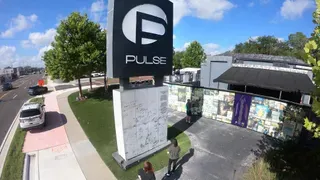October 5, 2011
Probe: Drug Abusers Exploiting Medicare Benefit
Kilian Melloy READ TIME: 2 MIN.
Drug abusers are exploiting Medicare prescription's benefit to score large quantities of painkillers, and taxpayers have to foot most of the bill, congressional investigators say in a report.
About 170,000 Medicare recipients received prescriptions from multiple doctors for 14 frequently abused medications in 2008, the Government Accountability Office found in an investigation for the Senate Homeland Security and Governmental Affairs Committee.
A Medicare recipient in Georgia got prescriptions for 3,655 oxycodone pills - more than a four-year supply of the painkiller - from 58 different prescribers. Another, in California, got prescriptions for a nearly five-year supply of fentanyl patches and pills from 21 different prescribers. Fentanyl is a powerful narcotic used to treat relentless cancer pain.
The cost of the questionable prescriptions amounted to $148 million in 2008. Overall, taxpayers pay three-fourths of the cost of the Medicare prescription drug program, which covers some 28 million seniors and disabled people for about $55 billion a year.
Prescription drug abuse is a growing problem for all types of insurance plans. Narcotics obtained with a prescription from unwitting doctors can feed a personal addiction, or be resold in a lucrative underground market.
Medicare, however, may be hobbled in its ability to confront the situation. Program officials told investigators that federal law does not allow Medicare to limit the access of beneficiaries who appear to be abusing drugs. Many private insurance plans and state Medicaid programs restrict patients who appear to be abusing drugs so they can only get narcotics from specific doctors and pharmacies.
Sens. Tom Carper, D-Del., and Scott Brown, R-Mass., are seeking ways to tighten Medicare rules. Carper chairs a subcommittee scheduled to hold a hearing Tuesday on the problem.
It's known as "doctor shopping." By visiting different practitioners, an addict can get multiple prescriptions for powerful drugs. Often, the doctors are unaware their patient is going to other physicians as well. To avoid suspicion, drug abusers often get their prescriptions filled at different pharmacies.
Using claim records, investigators illustrated how the strategy works: One unnamed Medicare beneficiary visited four doctors over 10 days to obtain a 150-day stock of oxycodone. The first doctor wrote a prescription for a 15-day supply, the second doctor for 20 days, and so on.
The investigation, first reported by The New York Times, found the worst abuse among 600 Medicare beneficiaries, each getting prescriptions from more than 20 doctors. Painkillers hydrocodone and oxycodone were involved in more than 8 out of 10 cases of doctor shopping identified by investigators.
In the context of the program as a whole, the number of drug abusers is small. The 170,000 whose prescription-use patterns aroused suspicion accounted for less than 2 percent of all the Medicare recipients who received prescriptions for the 14 frequently abused drugs.
Investigators attributed most of the cases of questionable behavior to younger beneficiaries, eligible for Medicare because of a disability and not their age. Nearly three-fourths of them also had low incomes.
In its response to the investigators' findings, Medicare said it recognizes the need to prevent abuse of the prescription program and is looking for ways to best accomplish that.
Kilian Melloy serves as EDGE Media Network's Associate Arts Editor and Staff Contributor. His professional memberships include the National Lesbian & Gay Journalists Association, the Boston Online Film Critics Association, The Gay and Lesbian Entertainment Critics Association, and the Boston Theater Critics Association's Elliot Norton Awards Committee.







